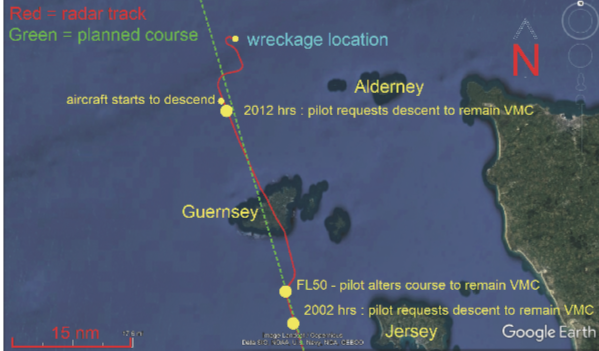

The man alleged to have arranged the fatal final flight of a Premier League footballer and his pilot, which crashed near Alderney, has pleaded ‘not guilty' to being reckless and negligent.
The single-engine Piper Malibu carrying Argentinian striker Emiliano Sala from Nantes to his new football club in Cardiff and David Ibbotson, who was flying the plane, ditched into the sea in January 2019.
David Henderson (66), a pilot from Yorkshire who was originally due to fly the plane, appeared in Cardiff Crown Court yesterday via video link to answer two charges brought by the Civil Aviation Authority (CAA).

Pictured: Pilot David Ibbotson, who flew the Piper Malibu plane.
He denied acting in a “reckless/negligent manner” likely to endanger the safety of an aircraft, and attempting to discharge a passenger without valid permission or authorisation.
The Court heard that the first allegation was related to the fact that Mr Ibbotson had been contracted to fly the aircraft despite not holding a valid commercial pilot’s licence at the time, and that he was not “competent to fly” in the type of bad weather forecast for the journey.
A trial date has now been fixed for 18 October next year. Mr Henderson was granted bail until then.
His defence lawyer, Stephen Spence, cast doubt on whether Cardiff would be an “appropriate venue” for a trial, given the possibility that Cardiff FC fans may be called for jury duty.

Pictured: The wreckage captured on camera underwater.
“The average attendance at a match was 31,408 people, which suggests there is a string local link to the football club… It would be unsatisfactory to have anybody on the jury who is fan of Cardiff City,” he argued.
Only once the trial has concluded will the inquest be able to finish.
While Mr Ibbotson’s body was never found, despite an extensive crowdfunded search effort, a post-mortem examination of Mr Sala’s body showed he had been exposed to deadly levels of carbon monoxide.
The official CAA report into the incident concluded that the plane split apart in the sky as its pilot lost control during a manual turn made at too high a speed. At 20:16, on the 21 January in what was believed to be a manoeuvre to avoid poor weather, the aircraft was lost from radar and struck the sea 22 nautical miles north-west of Guernsey.

Pictured: A map showing the final movements of the aircraft.
Overall, three factors were given as to why the crash happened: the pilot's loss of control, the aircraft breaking up because of the turn executed at speeds "significantly in excess of its design", and the pilot being affected from carbon monoxide poisoning.
The incident prompted the CAA to launch a 'Legal to Fly' campaign to crackdown on so-called 'grey charters' - an illegal type of air taxi service.
Comments
Comments on this story express the views of the commentator only, not Bailiwick Publishing. We are unable to guarantee the accuracy of any of those comments.